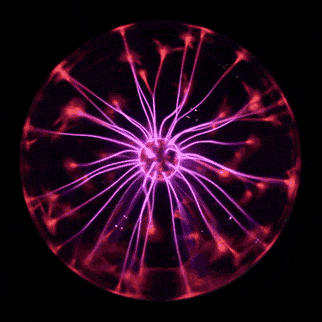VOSS:
Storing Solar Energy, it's Easy!
To smooth the production of a solar power plant of 24 hours must store electricity at night. classic solution: the batteries.
Alternative known: the flywheels.
The first and second are expensive... too.
Energiestro, specialist in the field for 15 years, changed all that with concrete, dividing by ten the cost of storage. Here Voss, solar storage Wheel, invention rewarded by EDF Pulse 2015. André Gennesseaux price we explained.
What is the point of a flywheel?
André Gennesseaux: For solar energy is to store electricity generated from day to make it available at night. The day, part of the electricity drives a motor that provides a rotating mass. At night, the flywheel drives a generator which produces electricity. Compared to batteries or hydrogen production, the flywheel brings a much lower cost, purchase and maintenance, and a good return on the scale of hours.
VoSS: storing solar energy is easy!
To ensure the power generated by a solar plant is available 24 hours a day, electricity has to be stored at night. The traditional method for doing this is with batteries; another alternative already in use is the flywheel. But both have always been expensive … Until now. Energiestro, a company that has specialized in this field for 15 years, has come up with a game-changer – the concrete flywheel – which cuts the cost of energy storage ten-fold. And this ingenious invention, called VOSS, has won its makers an EDF Pulse 2015 award. André Gennesseaux explains how it works.

Our expert André Gennesseaux. Graduate of the Arts et Métiers engineering school in Paris. Founder of Energiestro with his wife Anne, who used to be a researcher at Total. © EDF/Grégory Brandel
What are the advantages of a flywheel?
André Gennesseaux says: For solar energy, the fact that it can store the electricity generated during the day so it's available at night. During the day, some of that electricity drives a motor which rotates a mass. At night, this spinning mass powers a generator which produces a current. Compared with batteries or hydrogen production, the flywheel is much cheaper to buy and maintain, and offers excellent efficiency hour after hour. We've been working on it since 2001. We built a hybrid electricity generator with a steel flywheel, but the final cost was still too high. So we came up with the idea of making it from concrete – a very cheap material. With VOSS, we've been able to reduce the cost to 1 or 2 euro cents per kilowatt hour, compared to around 10 cents with batteries. In addition, maintenance costs are negligible and the service life is almost infinite.
Further reading: The great potential of hydrogen for energy storage
VoSS diagram. The concrete cylinder sits on a magnetic bearing (at the base) and spins inside a chamber in which the air pressure is extremely low. At the top, a motor/generator drives it when it is producing energy, and generates electricity the rest of the time. There are several models. The smallest, measuring 80 cm in diameter, and with a mass of 1.7 tonnes, stores 5 kWh. The biggest (1.60 m, 16.6 tonnes) has a capacity of 50 kWh. © Energiestro
It's a simple idea. Why hasn't anybody thought of it before?
Because it's not actually that simple … Concrete offers excellent resistance under compression. It can support the weight of a building. But it provides very poor traction. In a flywheel, the centrifugal force would pull it to pieces. We had to find a special formula. We worked with people who specialize in concrete – primarily with the CERIB (Concrete Industry Study and Research Centre). The fibres within it keep it under compression and we adjusted the rotation speed so that it always resists traction stress. We also had to optimize its efficiency, which we did by working on several elements: the friction around the spinning mass, the design of the motor/generator, etc. We achieved what we wanted: total efficiency of between 80 and 90%, energy storage for a whole night and very low operating costs. After conducting tests, the flywheels that had undergone 100,000 cycles were as good as new, whereas a battery only lasts for 3,000 cycles.
The flywheel: an excellent solution for storing electricity
The flywheel works by rotating a mass that is sufficiently heavy to keep it spinning for a long time, without friction causing a problem. It is used in numerous areas of mechanics in different forms. In this case, a motor powered by an electric current produces the rotation. To recover the energy, you have to mechanically secure a generator. As it spins, it produces an electric current. There are many practical problems with this. You need to: reduce friction to a minimum (which VOSS does through its vacuum chamber and magnetic bearing); have the heaviest possible mass; and ensure high efficiency. When air is drawn out of the chamber, the hot parts of the motor are prevented from cooling almost entirely. Energiestro has solved this problem by placing them (the windings) beside the stator (which is fixed), outside the chamber. The motor and the generator are combined in one piece of equipment, which does both jobs by turning in one direction or the other. The "load loss", when the wheel is rotating slowly, is reduced to almost nil, unlike traditional systems. This results in excellent efficiency: 80 to 90% of the electricity stored can be recovered.
When and where will we be able to find VoSS?
There is already demand from individuals, even though the machine is enormous (the smallest one weighs 1.7 tonnes). And demand is high worldwide. Increasingly, operators of electricity grids are requiring producers of renewable energies, such as solar, to provide a continuous supply. In an ideal world, solar plants and wind farms would work like traditional power stations. And in developing countries, many areas are not connected to the grid.
Storage units could provide electricity to entire regions from renewable sources. In these countries, this is also a problem for telecoms operators – 80% of their GSM installations are not hooked up to a grid. The same is true of other isolated installations, for example in the mining industry. They therefore need electricity generators and batteries, or even liquid hydrogen for storage. This is all very expensive, both to buy and maintain. The flywheel is an excellent solution – provided the price is low enough. The VOSS prototype system is currently being tested over a one-year period. So it will go on sale in two years' time.
These low-cost, maintenance-free flywheels would typically be used to store energy daily in solar plants in isolated locations, ensuring a continuous electricity supply. © Voss/Olivier Fournier


Prix EDF Pulse - Voss
« VOSS », VOlant de Stockage Solaire
L’entreprise française Energiestro développe un stockage d’énergie par volant en béton, solution ultra économique qui permettra d’utiliser l’énergie solaire de façon massive.
Le projet
Le frein à l'utilisation massive des énergies renouvelables est leur intermittence. Le stockage est une solution à ce problème, mais avec les solutions actuelles, les batteries, le coût de stockage de l'énergie est élevé : plus de 0,10 €/kWh. C'est plus que le coût de production de l'énergie ! La raison en est la faible durée de vie des batteries : quelques milliers de cycles seulement. Le stockage par volant d’inertie peut, lui, atteindre un très grand nombre de cycles, mais comme les volants actuels sont dans des matériaux coûteux (acier ou carbone), leur coût d'acquisition reste trop élevé.
6 brevets déposés
Energiestro a inventé un procédé permettant d'utiliser un matériau à très faible coût, le béton. Ce nouveau volant de stockage solaire, VOSS, sera au même prix que les batteries les moins chères, mais avec une durée de vie illimitée, offrant ainsi un coût de stockage inférieur à 0,02 €/kWh. Il deviendra alors possible d'augmenter massivement la production des énergies renouvelables intermittentes.
Energiestro vise en particulier les centrales solaires géantes installées dans les déserts. L’association de panneaux photovoltaïques et de volants VOSS produira une énergie renouvelable disponible nuit et jour à un prix inférieur à celui des énergies fossiles.
Le projet VOSS a été lauréat du concours mondial d’innovation en 2014.
Bénéfices de l'innovation

Comment est née l'idée ?
https://pulse.edf.com/fr/voss-volant-de-stockage-solaire
https://pulse.edf.com/fr/voss-volant-de-stockage-solaire



1 comment:
There's a chance you're eligible for a new solar rebate program.
Click here to find out if you are qualified now!
Post a Comment